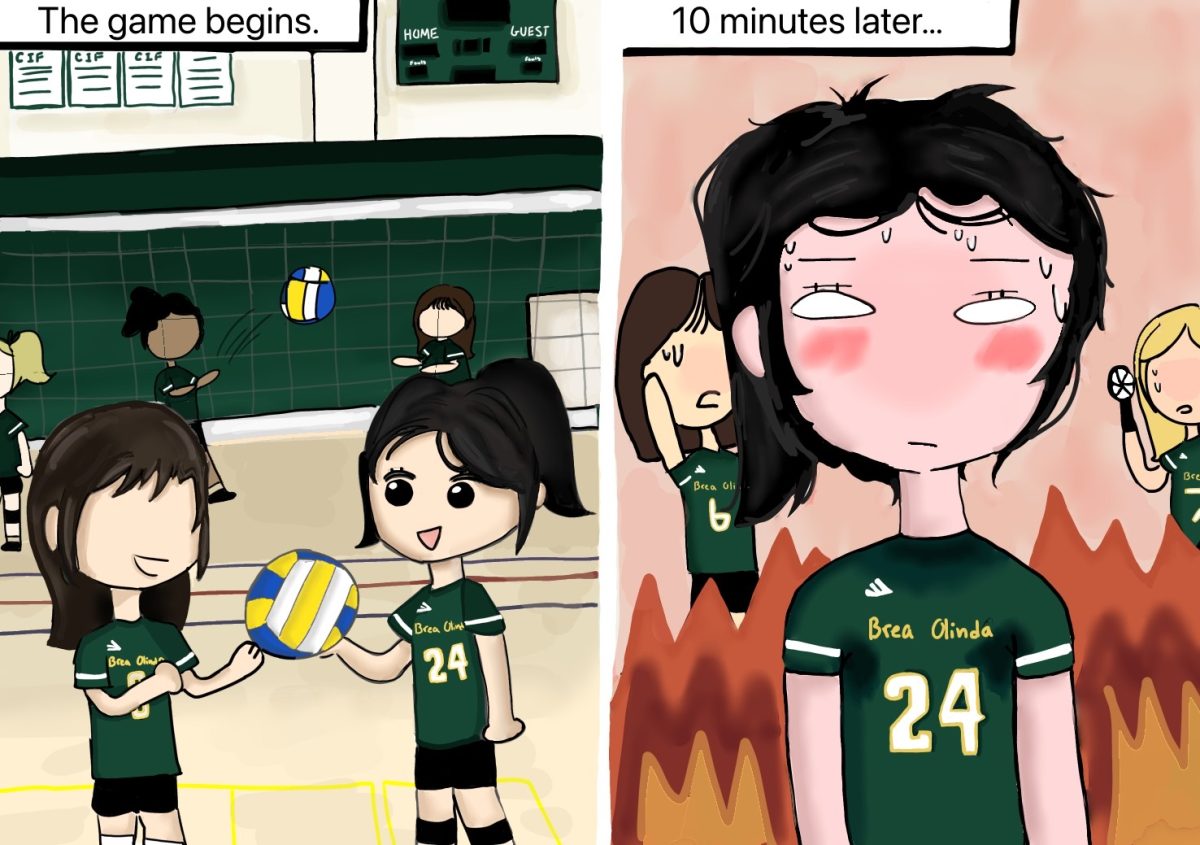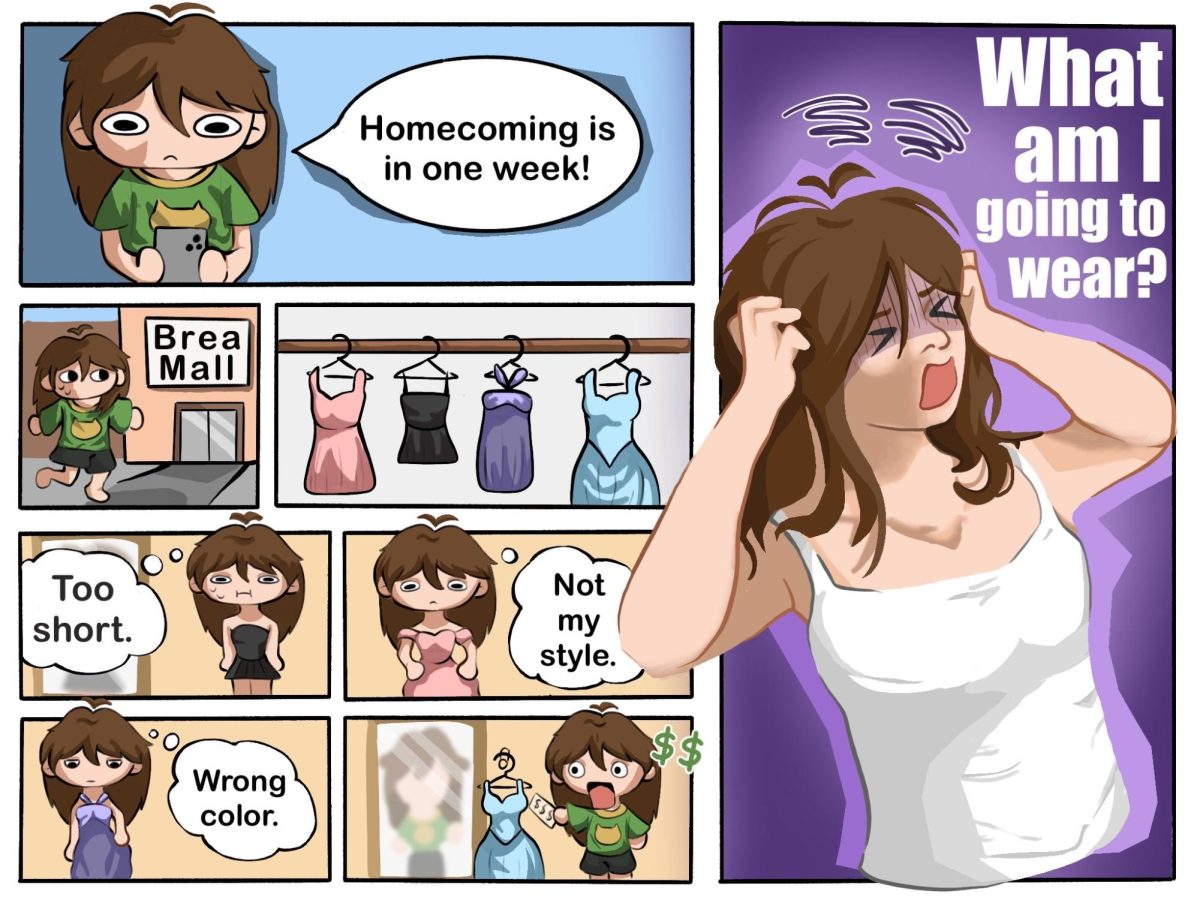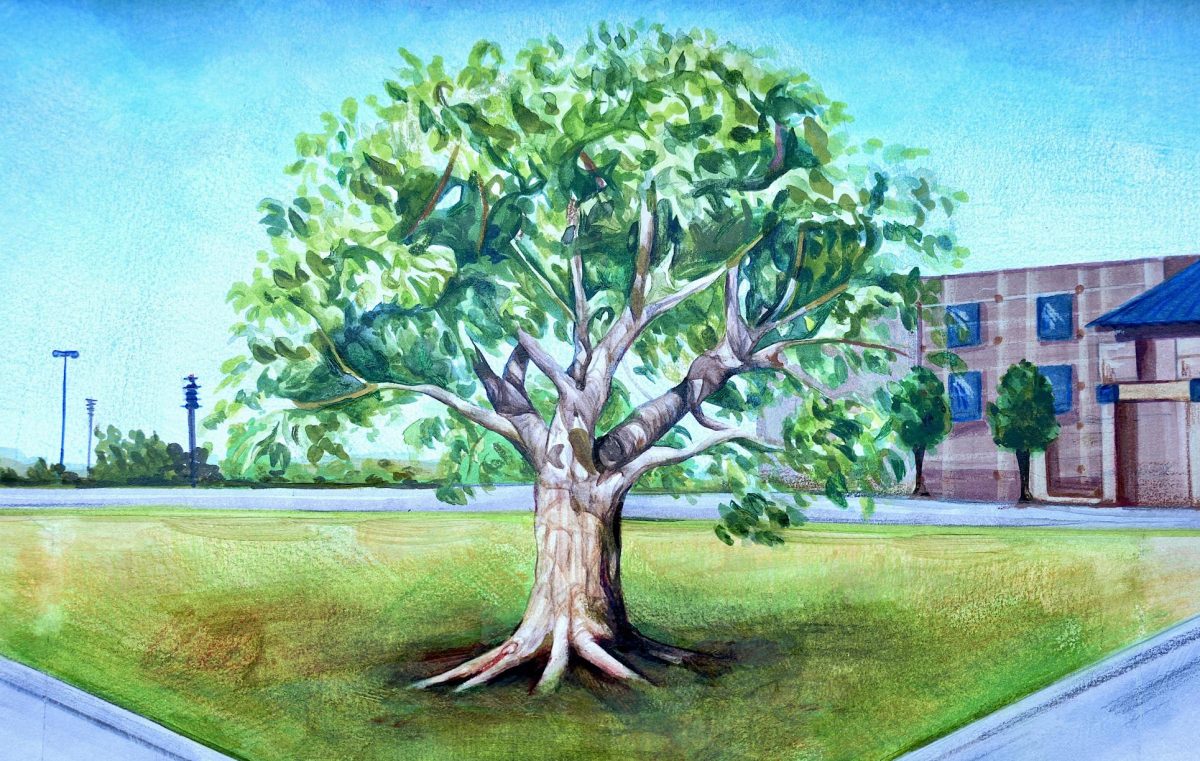Stepping into the Wildcat gym this year feels less like stepping into a space for competition, and more like entering an inferno. The air is heavy and stifling, the heat unrelenting.
Athletes participating in their sports in the main gym, like volleyball and basketball, or team sports in the midst of off-season conditioning in the auxiliary gym, must not only endure the usual rigors of their sports, but also push through exhaustion and discomfort from the oppressive heat.
At volleyball games (if not moved or canceled by the heat, which happened twice this season), spectators attempt to cool themselves with notebooks and personal electric fans.
The Wildcat gym — with its walls lined with banners of league, CIF, and national championships, and stands packed with supporters — is supposed to be the heart of school spirit. But when temperatures climb into the 90s, as they do with more and more frequency, the heat turns what should be a place for community and competition into a dreary sauna. (At the first rally of the year on Aug. 22, what should have been an excitement-filled celebration of the return to school was instead dull and sweaty.)
The only fans in the gym should be the ones cheering and supporting athletes and teams, not the whirring, electric, hand-held ones parents and students are forced to carry, or the loud industrial-sized ones supplied by BOUSD, which only circulate hot air, not cool it.
The lack of air conditioning is more than an issue of comfort, however; it’s about safety, equity, and creating an environment that allows student athletes to thrive.
Since the campus was built in 1989, neither of the BOHS gyms have had major infrastructure upgrades. For 36 years Wildcat student athletes have practiced and competed in gyms with fans that don’t do much besides whir and hum.
Concerns about the lack of AC in the gym were addressed by family members of BOHS’s girls’ volleyball team at the BOUSD school board meeting Sept. 11. The board is prioritizing refurbished tennis courts and a repaved walkway to Wildcat Stadium with funding from the $160 million Measure H, but not a necessary and long-overdue overhaul to the 36-year old gym’s Heating, Ventilation, and Air Conditioning (HVAC) systems.
Most of the $160 million from Measure H has already been allocated to high-cost projects like the complete rebuilding of the 108-year old Brea Junior High, recipient of 75% of the bond’s funding, and the addition of a multipurpose room at Falcon Academy of Science and Technology (FAST), and perimeter security fencing at BOHS.
However, only $16 million remains for “major projects” is still being considered by BOUSD. These projects, according to a Feb. 6 presentation by BOUSD, include: repairs to the pool and tennis courts (at a projected cost of $16.7 million), stadium and team room improvements ($12.8 million), improvements to the baseball, softball, and soccer fields ($1.6 million), and “foundation-improvements” to the gym’s floor and heating, ventilation, and air conditioning (HVAC) systems ($3.6 million).
While all of these projects are indeed needs for the crumbling campus, it’s AC in the gym that should be the funding priority.
BOHS’s administration and BOUSD leadership have gone to great lengths to improve the quality of life on Wildcat Way (fencing, 85-inch TVs, upgraded WiFi, one-to-one Chromebooks, a PAWS WellSpace), yet in 2025, we still don’t have AC in our gym — a gym that has hosted national champion Ladycats teams and even Olympians.
By prioritizing investing in air conditioning, the Wildcat gym could once again be a place where the entire community can comfortably gather to enjoy events, from rallies to volleyball games to youth basketball summer leagues.
And the urgency isn’t just about comfort. The potential for heat exhaustion or dehydration are not hypothetical dangers: Adolescents are more susceptible to heat-related illnesses than adults, compounded when exercising in enclosed, poorly ventilated spaces.
By prioritizing air conditioning in the gym, BOUSD can show the BOHS community — especially the hundreds of athletes, both current and future, who use the gym — their commitment to student well-being and health.










